Stony Brook, NY, August 27, 2012 - A group of 14 educators traveled to southern Louisiana in late February 2012 to learn about wetland loss in the Bayou State and how it relates to the habitat loss occurring in New York. While there, they helped rebuild habitats devastated by recent natural and man-made events. This was the second time in as many years that such a trip was planned.
The group was organized and led by Larissa Graham, New York Sea Grant’s (NYSG) Long Island Sound Study (LISS) Outreach Coordinator and Meghan Marrero, the President of New York State Marine Education Association (NYSMEA) and faculty at Mercy College in Dobbs Ferry, NY. Once back home, organizers and educators who took part in the trip responded to a number of inquires from media outlets, including
Newsday (
click here for pdf of article) and the
Port Times Record (
click here for pdf of article).
More recently, the trip was featured in the July/August 2012 issue of the National Oceanic and Atmospheric Administration's (NOAA)
Coastal Services magazine (
click here for pdf of article, "Learning Stewardship in New York by Helping with Wetland Loss in Louisiana").
During and after both the February 2011 and 2012 trips, NYSG's Web Content Manager Paul C. Focazio documented the learning experience via numerous blog entries at
nysmea.blogspot.com. Since the blog was launched, some 5,338 visitors have checked out the posts related to the two restoration and wetlands education trips. The most popular posts to date were February 2011's
"The Louisiana Coast," with over 600 visitors, followed by the February 2011 post "
Louisiana's Working Coast," which has received over 400 visits.
During this year's trip, the NYSMEA/NYSG educators, along with students from Massachusetts' Brandeis University, worked with the Barataria-Terrebonne National Estuary Program (BTNEP) to plant approximately 500 live oak, sand oak, and hackberry trees on a restored ridge re-created from dredged sediments that were excavated during dredging in Port Fourchon. With this and future plantings, this ridge will one day become a mature maritime forest—a crucial habitat that provides food and shelter for birds during their migration routes.
As for the previous year, the educators planted nearly 800 salt matrimony vine tree/shrubs on this rather vegetatively-bare ridge with BTNEP. These small, native evergreens have a high success rate in most soils and are also tolerant of salt spray and drought conditions. Other plants found on the ridge, including marsh hay, bitter panicum and
Spartina patens, exhibit similar endurance qualities.
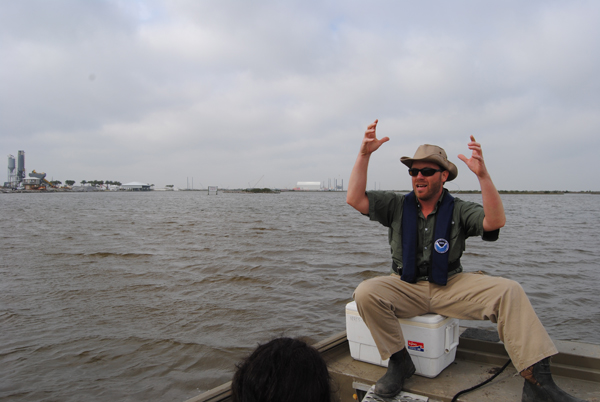
Healthy wetlands support our fisheries, our industry, and our communities,” said Mel Landry, a Marine Habitat Resource Specialist with NOAA's Restoration Center. Landry is sitting on a boat heading to Port Fourchon's Maritime Forest Ridge from the mainland's marina. “By restoring habitat, we are preserving an engine of job-creation and economic growth.”
Photo by Larissa Graham, New York Sea Grant.
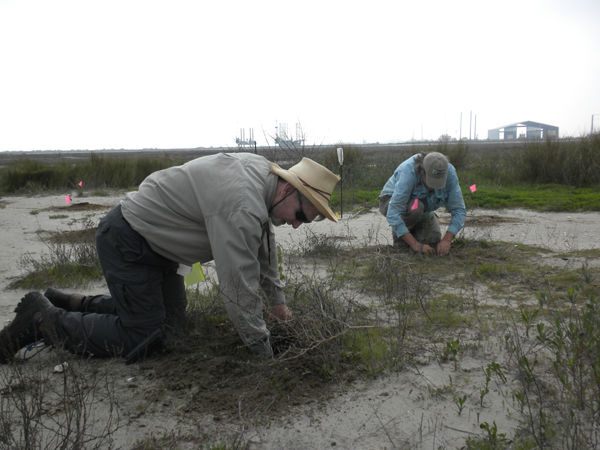
Thomas Armentrout (pictured in front), high school teacher on Bainbridge Island, Puget Sound, Seattle, WA was one of the NYSMEA/NYSG educators who took part in the ridge plantings; (pictured in back) BTNEP's Plant Materials Coordinator Matt Benoit. "We'd like to establish a maritime forest here," he says. If successful, BTNEP and its partners will help to minimize the impacts of strong storms, including wetlands loss, among other issues.
Photo by Paul C. Focazio, New York Sea Grant.
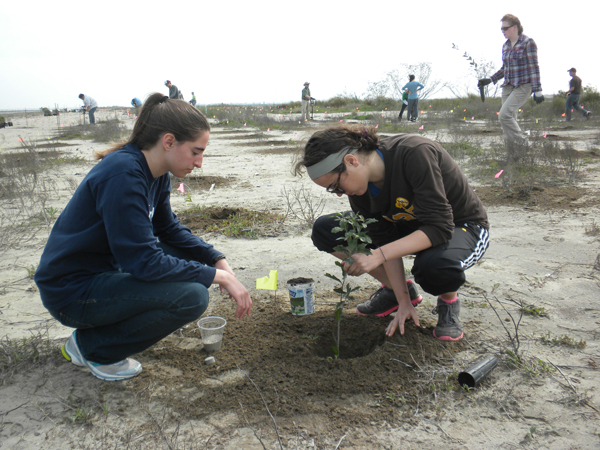
Students from Brandeis University helped with the ridge plantings, too.
Photo by Paul C. Focazio, New York Sea Grant.
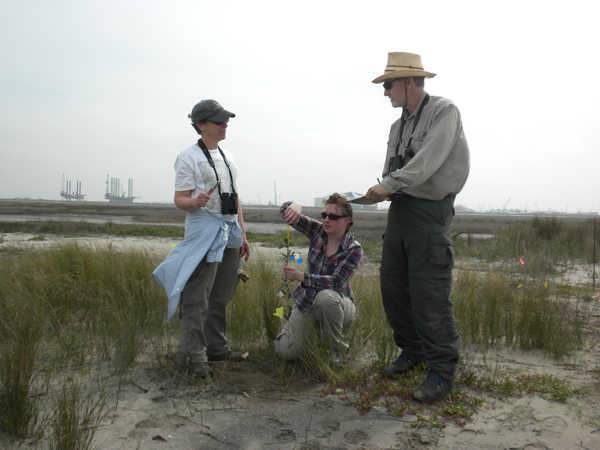
In order to document the success of this and other BTNEP plantings on
the ridge, baseline data was gathered once all the plants were in place
in the various test plots. This information - which includes statistics
on height, leaf spread and stem width - will be used as a measure of
growth and survival after the plants are in the ground for a year.
(pictured above l-r), Elizabeth Yanuck-Platt, science teacher (AP Environmental Science and the Living Environment) at Smithtown High School West; Coleen Grant, science teacher, Centereach High School; Thomas Armentrout, high school teacher on Bainbridge Island, Puget Sound, Seattle, WA.
Photo by Paul C. Focazio, New York Sea Grant.
(pictured below l-r) New York Sea Grant's Web Content Manager Paul C. Focazio
(the primary writer and editor for NYSMEA's blog) and Coleen Grant, High
School Science Teacher, Centereach, NY.
Photo by Larissa Graham, New York Sea Grant.
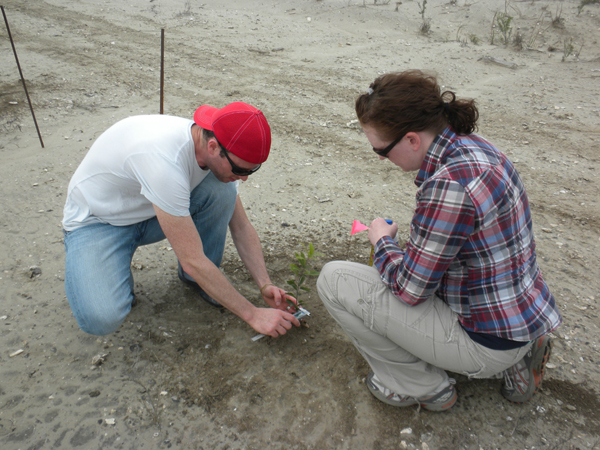
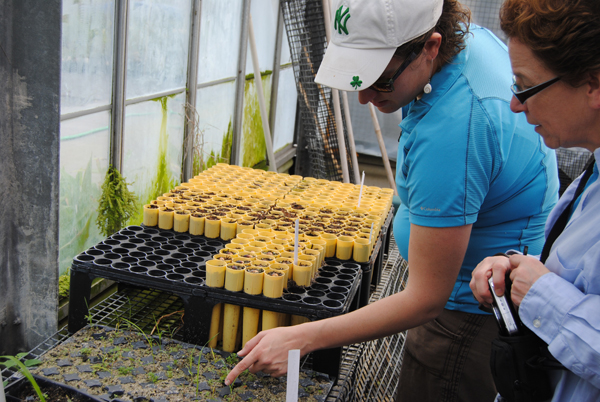
As seen in the photo above, educator Elizabeth Yanuck-Platt talked with Caitlin Reilly, a Sea Grant extension specialist at Louisiana State University (LSU) who led the group during a morning of plant propagation and re-potting at the Pelican Greenhouses and Wetland Plant Center in City Park, New Orleans, LA. In the photo below, Reilly is pictured with NYSG's Long Island Sound Study Education Specialist Larissa Graham.
Photos by Paul C. Focazio, New York Sea Grant.
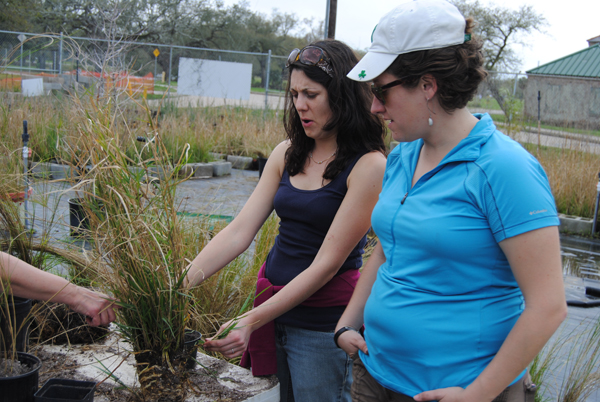
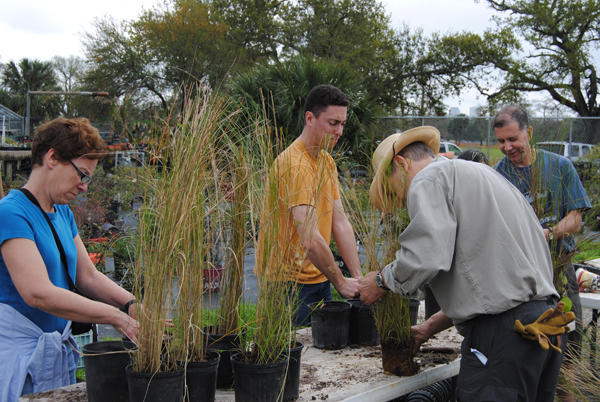
Some commonly used more salt-tolerant plant species used in and around New Orleans restoration sites include Gulf bluestem, bullrush, oyster grass and
Spartina patens (marsh hay), the latter of which the group also helped to re-pot in larger planters for a future restoration effort (as seen in the picture above). All weeds were removed from each
Spartina plant, as the plants do not compete well once planted. Also, the plants were re-potted using a mixture of mostly sand with some mulch and peat moss.
Photo by Larissa Graham, New York Sea Grant.
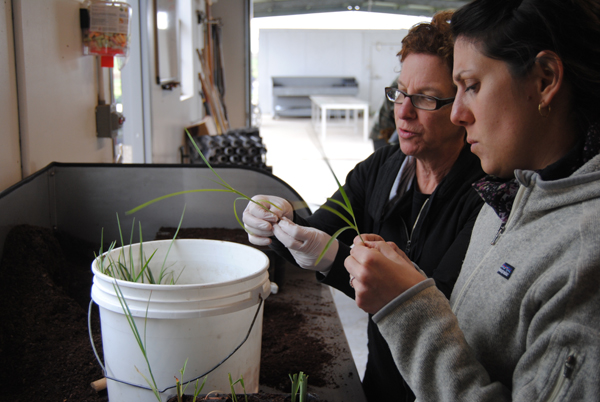
Educator Elizabeth Yanuck-Platt is pictured above with New York Sea Grant's Long Island Sound Study educator Larissa Graham at the Golden Meadow Plant Materials Center, where she and other educators propagated restoration plants including Gulf bluestem by clipping fully-grown ones, placing several clippings in separate sections in a tray and then trimming the clippings to spur additional growth and increase their chances for survival.
Photo by Paul C. Focazio, New York Sea Grant.
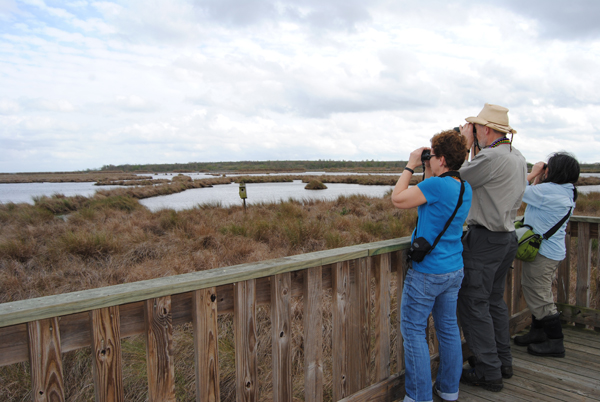
The educators also checked out a number of wetland and restoration sites while in southern Louisiana, including Bayou Sauvage National Wildlife Refuge (pictured above), the largest urban wildlife refuge in the country and one of the last remaining marsh areas adjacent to Lakes Pontchartrain and Borgne.
Photo by Larissa Graham, New York Sea Grant.
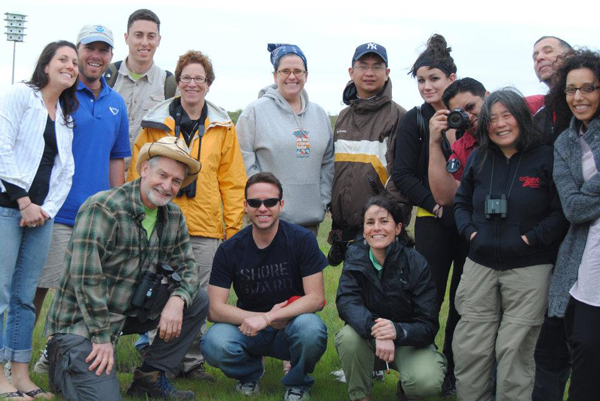
On the final day of the New York State Marine Education Association and New York Sea Grant-led restoration and wetlands trip in southern Louisiana, our educators (pictured above) and students from Massachusetts' Brandeis University toured the facilities at LUMCON, the Louisiana Universities Marine Consortium. LUMCON's base of operations is at the W.J. DeFelice Marine Center in Cocodrie, which lies within the expansive wetlands of the Mississippi River deltaic plan between the Atchafalaya and Mississippi rivers. The Marine Center offers coastal field and laboratory space to researchers, educators, students and public groups.
Photo courtesy of Larissa Graham, New York Sea Grant.